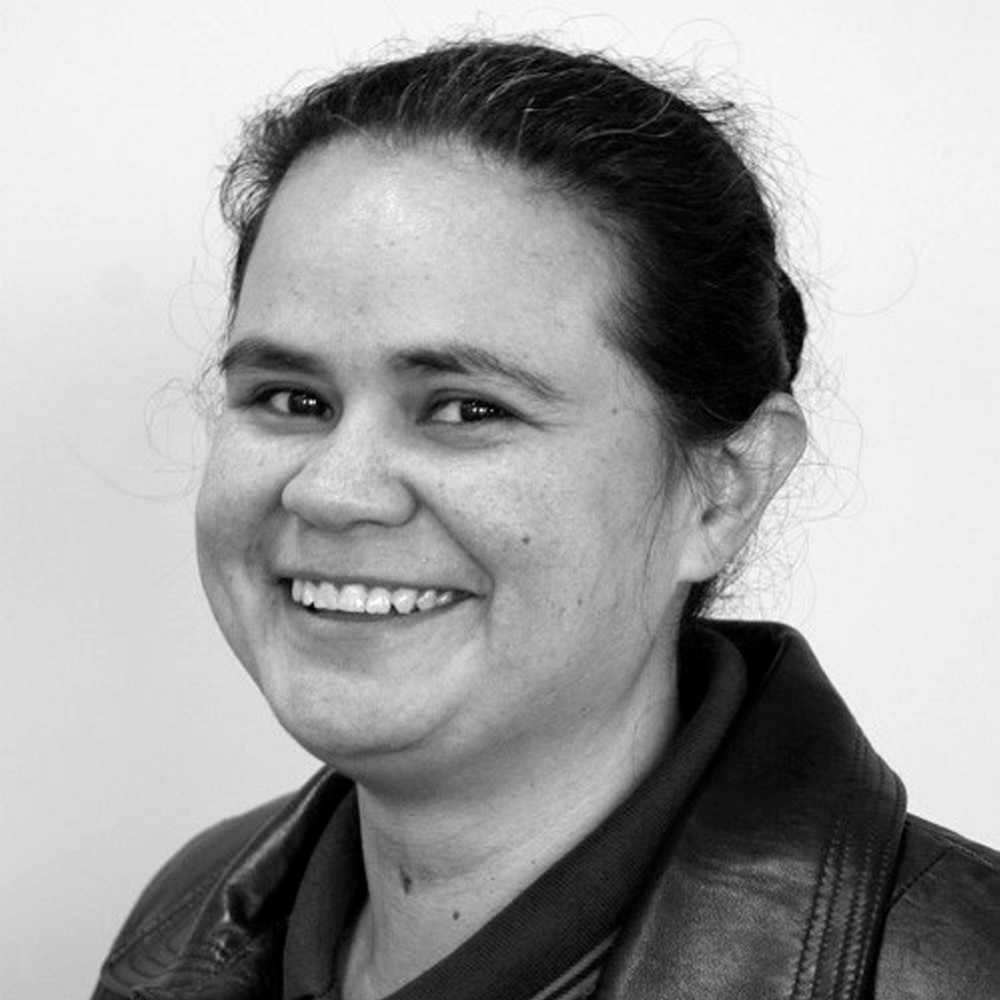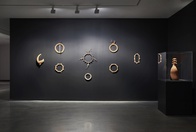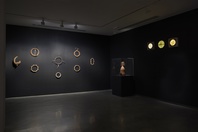Janet Fieldhouse
Cairns. Meriam Mir, Torres Strait region
2019
Displayed 2019 at Museum of Contemporary Art Australia

Janet Fieldhouse
Born 1971, Cairns, Queensland. Lives and works Cairns. Meriam Mir, Torres Strait region
Janet Fieldhouse’s ceramic hand-built forms acknowledge the traditions of navigation, living off the sea and land, and women’s traditional adornment practices such as weaving body adornments for ceremony and scarification. Fieldhouse studied art at Cairns TAFE before moving to Canberra, where she obtained two degrees from the School of Art at the Australian National University. She was awarded the inaugural Indigenous Ceramic Art Award from Shepparton Art Museum in 2007, and again in 2012. In 2017 Fieldhouse was the recipient of the Australia Council residency at the Kluge-Ruhe Aboriginal Art Collection, University of Virginia, Charlottesville, US.
Artist text
by Tina Baum
Redefining cultural representation, Janet Fieldhouse flawlessly melds her Torres Strait Islander cultural memory and knowledge with the non-traditional medium of ceramics. Recognising both her matrilineal connections to Badu (Mulgrave), Mua (Moa), Kirriri (Hammond) and Erub (Darnley) islands and South Sea Islander communities, and her father’s European heritage, her practice centres on identity, family and community. Fieldhouse accidentally ventured into ceramics in early 2000, and since then she has developed a practice exploring cultural expression through rigorous experimentation. While interrogating themes of identity, community, ritual, dance, weaving and the environment – all key elements of ailan life – it is however the central role women play in a rich cultural, spiritual and ceremonial society that she primarily focuses on.
Despite Christianity and colonisation destroying culture and many languages in the Torres Strait, some knowledge has remained in the memories of Elders and in the archival record. It is through oral histories that Fieldhouse has reinterpreted the long-lost practice of female scarification and tattooing from her Erub community. The innovative Comb and Pendant (2016) and Tattoo (2011) series feature lightly carved and cut and layered designs applied onto thin discs of porcelain. It is only when these discs are backlit that hidden ritual objects and cultural designs are revealed; remnants of intimate ceremonial body markings.
In her current Hybrid (2017) and Confluence (2017) series, Fieldhouse further extends her practice after travelling abroad and learning from traditional pottery artists of the Pamunkey and Tewa peoples of the Pueblo and from artists on Bougainville and the Solomon Islands; encounters that were life-changing. A shift in materials, production and process has allowed Fieldhouse to differentiate her work from other ceramicists, regionally, nationally and internationally.
Transferring body designs from skin to clay, Fieldhouse moulds and carves, inserting not ink but emu and bright bird feathers and twine into resolved and robust hand- built porcelain and raku forms. She uses a simple palette of earthy red, black, white and brown to generate full-bodied incarnations of these skin-deep scars and tattoos, awakening a three-dimensional form from two dimensions; transforming the meaning and presence of this cultural practice by creating abstract earthen manifestations of time-immemorial body markings. Fieldhouse deliberately balances each part of the work, intersecting the forms at key points, finding the ‘sweet spot’. This perfect balance, achieved without the help of connectors or supports, further skews the visual plane and challenges the imagination of the viewer: is it a canoe and paddle, or a basket and digging stick? is it body adornment or parts of the landscape? Each form encourages a different interpretation from the viewer, opening up a deeper level of engagement with the stories Fieldhouse is telling.
Through her remarkable use of ceramics, Fieldhouse ensures that knowledge of culture, history and identity remains strong. Her bold, abstract and refined works provide an alternative, contemporary perspective of the bygone tradition of scarification and tattooing. Her practice reminds us that cultural knowledge has a meaningful and strong presence today, regardless of the medium used to reveal it. Just as Fieldhouse balances her two worlds, her works also achieve equilibrium, both culturally and physically, ensuring her community’s cultural knowledge is retained through her art for future generations.


